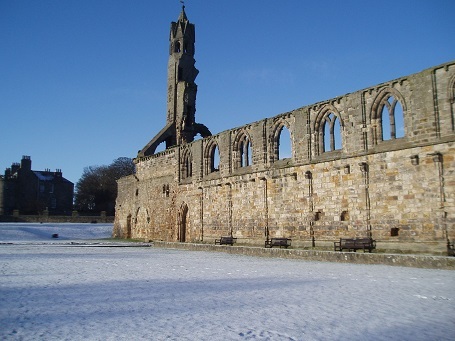Cathedral Cloister and Priory Buildings
Cathedral Cloister and Priory Buildings
Like many medieval English and continental cathedrals, St Andrews had an associated monastery. In the mid-twelfth century a priory of Augustinian canons was founded at St Andrews Cathedral (displacing an earlier community of Celtic holy men). The Augustinian canons managed the shrine of St Andrew, and the cathedral functioned as their monastery church. The canons lived in accommodation to the south of the cathedral, and the remains of their cloister, storage rooms and chapter house (where priory business was discussed) can still be seen. Academic study was an important part of monastery life, and during the late Middle Ages canons from the cathedral were involved in the setting up of St Andrews University. However, the atmosphere in the cathedral priory was not always one of virtuous scholarship – in 1394 the prior of St Andrews Cathedral, Robert de Montrose, was murdered by one of his fellow canons. The murderer died of natural causes shortly afterwards and was buried in a rubbish heap.
Street View
Additional Information
Location: East of the junction between North Street and South Street. Date Built: Twelfth to fifteenth centuries.
The prior (or head canon) of St Andrews Cathedral Priory was one of the most important churchmen in Scotland. On formal occasions he took precedence over the heads of all other Scottish monasteries
Some of the priors of St Andrews Cathedral were buried in the chapter house. Their stone coffins have since been uncovered. There are small holes in the coffins to allow fluids to drain away.
The Cathedral Priory owned most of the land surrounding St Andrews. As late as the nineteenth century the fields to the south of St Andrews were called Priory Acres.
In the north-east corner of the cloister there are two small niches in the wall. These were probably for storing books.
The cathedral buildings were not always perfectly maintained. A canon at St Andrews Cathedral was killed when part of the roof collapsed during a storm.Following the Reformation, part of the cathedral cloister was converted into a private house. The south wall of the cathedral church became a garden wall!
